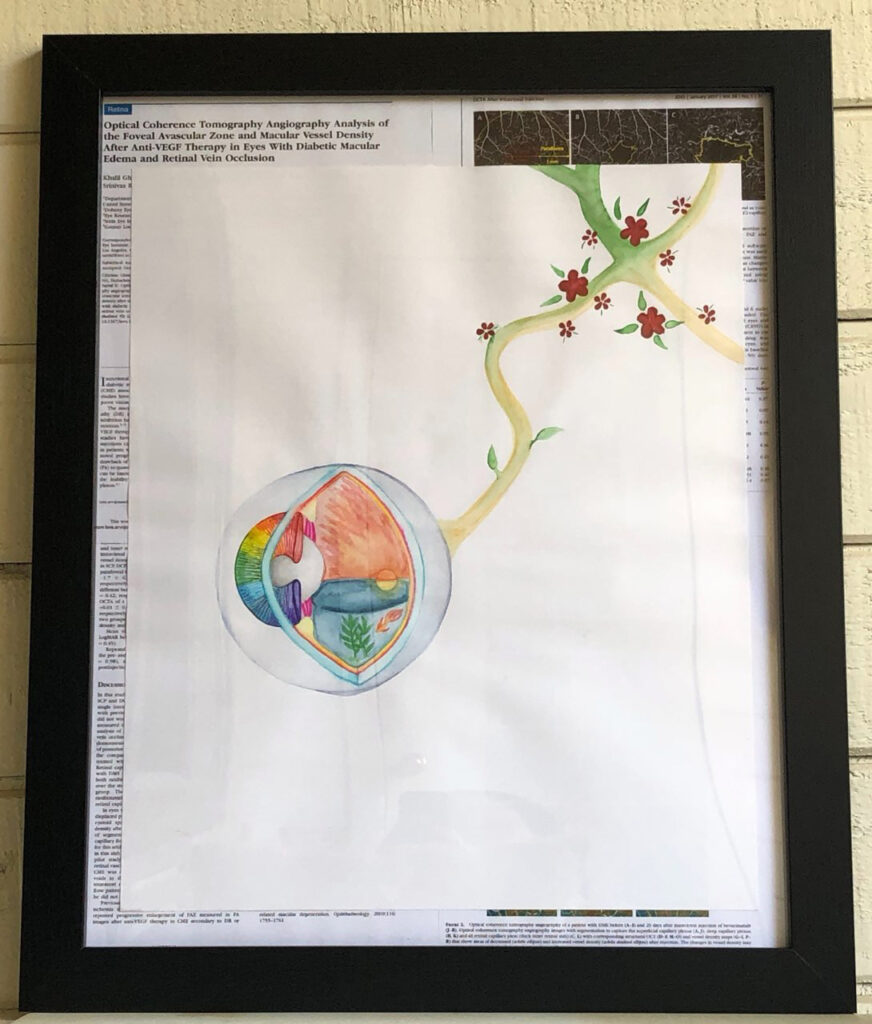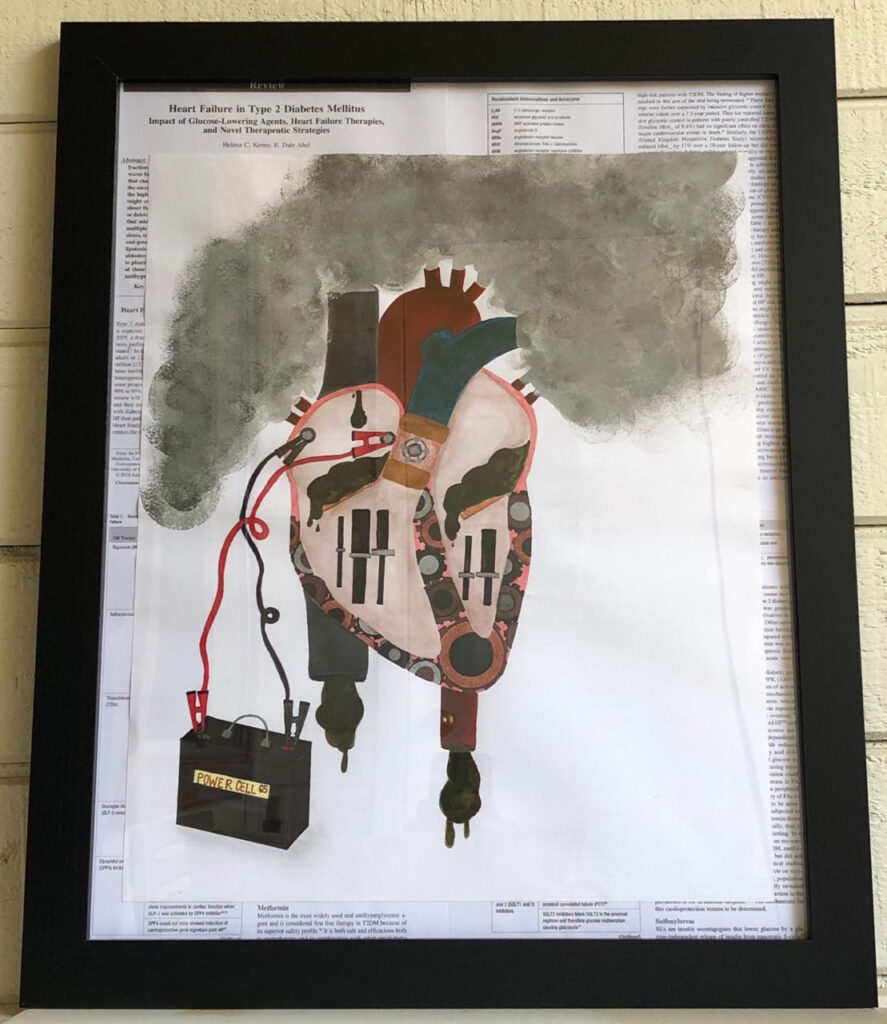After a busy week with Case Western Reserve University School of Medicine classes, Brooke Quinton and Yiran Wang found that painting and drawing together were good ways to relax on the weekends. Recognizing the many benefits of time spent creating artwork, they thought perhaps art could be integrated into the classroom to inform their knowledge of human anatomy.
“Wang came to me with the idea of starting a hybrid anatomy art elective together,” explained Quinton. “I loved the idea, so we took it and ran with it!”
Taking inspiration from art class offerings from other medical schools, Quinton and Wang proposed a one-of-a-kind art course that would focus on observing and depicting organ systems and the human figure.
Their proposal led to the launch of a dedicated art class for medical students last fall—one designed to allow them to develop and practice observational skills, reinforce anatomy knowledge and relieve stress. It’s a 10-part course focused on the human body and organ systems titled, Drawing from Life: Study and Observation of the Human Anatomy. Students do not need to have prior art experience, and it’s offered for-credit on a drop-in basis.
The class, facilitated by Quinton and Wang and faculty sponsor Erin Lamb, gives students the opportunity to work with organ and skeletal models to draw or paint using any art mediums they prefer—such as graphite, pastels, acrylic and pencil.

Lamb shared that courses like this are rare in a medical school’s curriculum.
“It is reasonably common these days to see electives within medical schools that focus on art observation and developing skills of close-looking,” she said. “I think it is far less common to see a course where students develop these skills through drawing.”
Topics include basic body proportions, skeleton, musculoskeletal system, thorax, abdomen, skin, head and neck, portraiture and figure drawing, providing students with an opportunity to see an accurate portrayal of the human anatomy. Drawing anatomy through artistic practice is meant to reinforce the anatomical concepts of the various organ systems.
Students taking the course are not expected to create a masterpiece, and they are responding with enthusiasm about learning valuable knowledge of the human anatomy. And, they find the course fun and different.
“We just had a mid-course survey, and responses have been very positive!” said Wang. “The students seem to really enjoy the chance to improve their artistic abilities, reinforce what they learned in anatomy and get to know their peers in a different setting.”
Not considering herself to be a particularly skilled artist or teacher, Quinton was a bit nervous about providing feedback to students as a facilitator.
“I was surprised to see how many of our amazingly talented students commented that they have found our insights helpful in their skill development,” Quinton added. “It goes to show that a second set of eyes can be a huge help—both in medicine and in art!”
As the faculty sponsor for the course, Lamb sees benefits extend beyond what is happening in the art studio.

“The most rewarding part has been seeing the passion that Wang and Quinton have brought to creating and running this course, and the commitment of all of the students who have dedicated so many hours in their too-busy schedules,” Lamb observed.
With the rigor, stress and competing demands of attending medical school, Quinton and Wang feel the course provides a needed place for wellbeing.
“Many of our students have expressed how enjoyable it has been to have an outlet on Friday afternoons to unwind from the week and have dedicated time set aside for drawing, reinforcing their knowledge of anatomy and self-care!” Quinton shared.
Wang agreed: “Over the summer when I took art classes at the Cleveland Institute of Art, I realized how much I was missing that community and the space to make art and do something just for my own enjoyment. While there is also an academic focus with this course, I think that intentionally setting out time and space every week to observe, create, and engage with others through art is part of honoring my wellbeing.”

